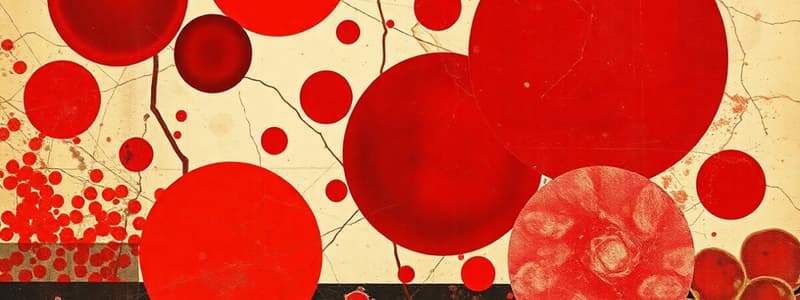Podcast
Questions and Answers
What shape are budding yeast cells typically?
What shape are budding yeast cells typically?
- Cylindrical
- Thread-like structures
- Spherical
- Oval-shaped (correct)
Which of the following describes a mycelial form of yeast?
Which of the following describes a mycelial form of yeast?
- Thread-like structures (correct)
- Large spherical cells
- Small oval-shaped cells
- Flat disc-like cells
How do yeast cells compare to Red Blood Cells in terms of shape?
How do yeast cells compare to Red Blood Cells in terms of shape?
- Yeast cells are typically more cubical
- Yeast cells are often elongated
- Yeast cells have a larger diameter
- Yeast cells are typically more oval-shaped (correct)
Which forms can yeast cells exist in?
Which forms can yeast cells exist in?
What is NOT a characteristic of yeast cells?
What is NOT a characteristic of yeast cells?
Flashcards are hidden until you start studying
Study Notes
RBCs vs. Yeast
- Red blood cells (RBCs) and yeast are both microscopic organisms, but they have distinct characteristics.
- Yeast can exist in two forms: budding and mycelial.
- Budding yeast cells are oval-shaped.
- Mycelial yeast cells are thread-like structures.
- The shape of a yeast cell can differ from the shape of a red blood cell.
- Yeast is microscopic, making it necessary to view it under a microscope.
Studying That Suits You
Use AI to generate personalized quizzes and flashcards to suit your learning preferences.



